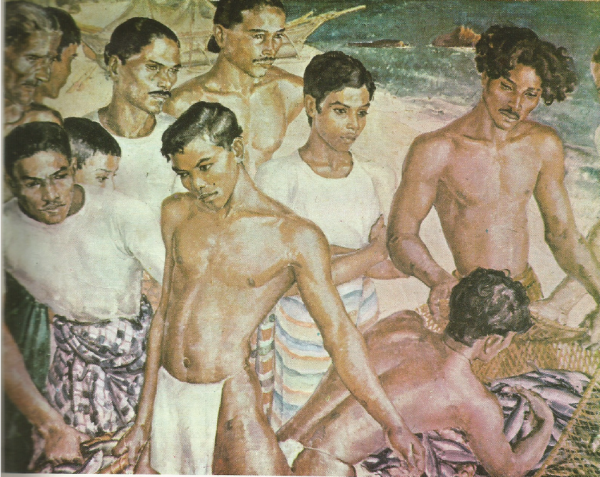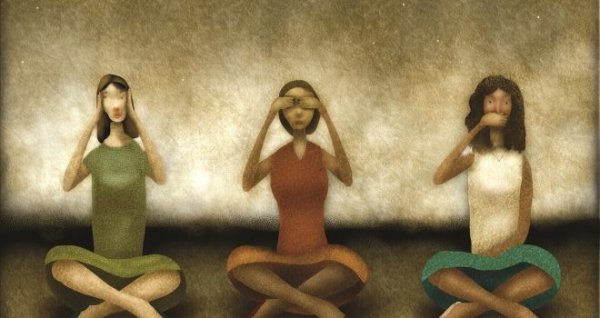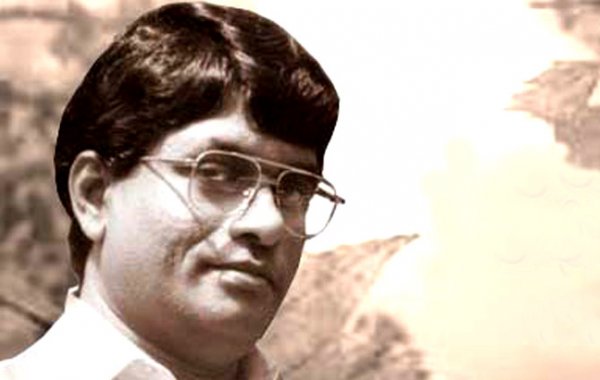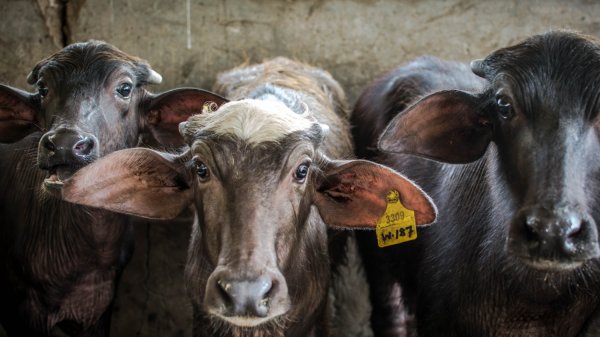
The newest addition to Sri Lanka’s cinemascape has been making quite a stir. As the first fully Sri Lankan Tamil movie to be released island-wide in 40 years, Komaali Kings had a lot riding on its shoulders. While recently there have been some Tamil productions, they were very limited releases on a low budget. It is also no easy feat to compete with the giant that is the South Indian film industry, and create a movie with a distinct Sri Lankan identity. But it looks like Komaali Kings was up to the challenge, with rave reviews coming in from those who saw it.
Much credit goes to the man behind this ambitious venture: writer/director King Ratnam, who also stars as the lead. Roar Media had the opportunity to speak to him about the film.
How has the film been doing so far?
We’ve had good start, you know, we’ve done well for this [first] six days. We’ve done decently well, so it’s been a good start.
Was it expected to do well in the North and the East? How has it been in Colombo?
It was expected to do well in Colombo anyway. The rest of the areas: Jaffna, Batticaloa, especially upcountry Kandy, Hatton, Trinco, the response has been very, very good. But it’s still early days, so, you know, it’s picking up.
How difficult was it to make the film? Did you manage to like find backers easily?
Making the film was a tough journey right throughout, because this has not been done before. So to start with, I had to convince myself that this was possible. Then secondly, I had to convince the investors. There are seven investors that invested in this movie. That’s a different model as well, because normally a movie is produced by one producer. For this, you had seven people pooling in money.
I tell everyone that I had only 20 Rupees in my hand when I started this project. Now it’s a 30 million [Rupee] project, and the money part was obviously a very big challenge. You’re also competing with a giant like South Indian cinema. Your quality of story, quality of presentation, production values, all have to be really, really high. So I worked really hard with the team of about 150 or so to get this going. We had a hundred days of pre-production, and the production, the shooting, was only about 30 days, or less than 30 days.
My stumbling block was mainly post-production. We had shot a movie but then to present it in that scale, it took a lot of room. Because I had also made a conscious decision to do everything here, including colour grading and editing. So except for the 5.1 sound, which was mixed in India, everything else was done here. So it was a difficult process. There is a saying: filmmaking is a chance to live many lifetimes. I’d only read [about] it, but [now] experienced it as well.
Did you find people to release it as well? Was that as difficult, too?
Yes. Everything has been [difficult] because it’s not been done before. So people are scared. Releasing this movie on par with Indian movies has been a challenge.
So I said, you have to come out in 50 plus theatres. We have to wait for that because we didn’t want to be like an amateur, small film and then disappear, because this has to be done on a large scale. So we had to wait for a very long time for this to be released to everyone. So it was about convincing people all the way. People trusting us, trusting our product. And especially, you get this a lot because it’s a local movie. People say ‘so what, what, what have you done?’ until we got a preview ready. So it had to cross a lot of red tape.
You said a long time. So how long has it been since you finished production?
Three years. Three years to get here.
I read that a major inspiration for you was the film Komaligal. Was that something special to you?
No, no. Komaligal is the only film to have run 95 days and made some money and become a notable film. But if you look at it, it’s a radio drama turned into a movie. As a movie, I can’t say it’s a great movie.
What inspired me was these dialects they had used. Because they had used many Tamil dialects in the film and that seemed to have touched many, many communities in Sri Lanka. So I thought I should take that further. They have only used maybe three dialects. I took it further and I used six Tamil dialects in this movie, notably Jaffna Tamil, Batticaloa Tamil, upcountry Tamil, [the] diaspora speak like an English mix of Tamil. And then even [people in] Kotahena speak another brand of Tamil. So I had to bring all of that, and then also Sinhalese and English. So I used this complete repertoire of dialects in this movie. So that was the main inspiration from Komaligal.
Another inspiration for me was this Charlie Chaplin quote. He says life is a tragedy in close up, but a comedy in long-shot. That was apt for me personally, and also I thought for the lives of my people. Even though the Tamil community has been through so much turmoil and blood and sweat, and not just them, the entire Sri Lanka, I thought somebody should look at that from a bigger picture and maybe create a mirror, to laugh at ourselves as a community.
How did you come up with this particular storyline? Did you always have a sort of coming home story in mind?
Coming home is something that I personally did. I’d been abroad for about five years and I came back in 2004, and the tsunami happened, and I never went back for some reason. Even though I was not affected by the tsunami.
The only thing I was trying to search throughout is that one identity that we can all connect to. Is there an identity we can all connect to? Is there a come back we can make? Because our identities are all shattered as Sri Lankans. We put up a flag whenever we want to. Like what I mean is, you want to put up the Tamil flag, you put it up, you [want to] put up the Sinhala flag you put it up, you [want to] put up the Muslim flag, you put it up, you know? So yeah, we are broken in that sense. In India, if you ask anyone, they’ll say Indian first, and then say something else. Here the story is different. All I wanted to do was look at that possibility of us finding that one identity and love for this country. So that’s what I was trying to play at. Hopefully something like the ’96 World Cup.
When you were writing the story, did you write it around this particular theme or did that just come naturally when you were writing it?
I guess that it’s a bit of both. Filmmaking is one man’s vision and it is definitely something that has come from living. I’ve done 13 drafts of this story. I also didn’t want this whole preachy, patriotic thing. Komaali Kings is definitely not that. I just wanted a very subtle, very realistic, a very ‘me’ kind of saying things. So I think I’ve done a decent job.
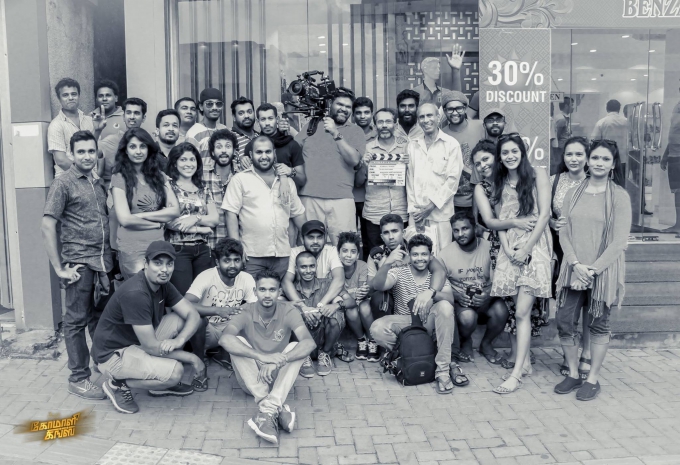
The cast and crew of Komaali Kings, image courtesy KomaaliKings.com
The characters really came out as very natural and very Sri Lankan. Were they from your personal experience?
Yeah, I think I put out the entire frustration in those two-three dialogues. At one point of the film, I say [that] I’m bored of the ‘machine’ life abroad. This is where I belong. I’m not a refugee. I’m just a simple Sri Lankan. That’s the point I wanted to stress. Of course this is the comedy. Looking at ourselves and laughing at our own pitfalls. So things like the dowry issue, the whole blocks that we have not come out of as a community is also a thread.
So I guess, coming back to your question, that was, I think, mainly due to my exposure. The most difficult question that anyone asks me is where I am from. Because I was born in Colombo and [during the] ‘83 riots, I just got on a train and went to Batticaloa. I lived there for four years. Then I left to India, lived there for two years.
Then I had my education. From the age of 10, I had my education at Trinity. Right up to when I finished my education. So you see the exposure. Then I lived in Colombo, Kotahena, all over the place. This exposure helped me bring these characters. Because I bring characters from Kotahena, I bring characters from Jaffna, Batticaloa, even the upcountry. I think it was only possible because I’m exposed to all of these cultures.
Your brother Jude’s film was quite different from Komaali Kings. Did you want to do something like that too?
No, no, no. It’s very coincidental. He’s been working on it for 10 years. So it’s a documentary. Even personally, we are very, very, very, very different people. I think he’s a more serious guy who kind of takes his anger. It’s about anger. So for me, I tried to switch my anger to something sarcastic. So that’s how I ended up with Komaali Kings.
The subtitles in Komaali Kings were really well done. Much more than other films, where you would usually expect literal word-for-word translations. But these had captured the actual meaning of the phrases. Was that especially important?
Credits must go to Varun Chandramohan. He’s the one who actually worked on the subtitles. We worked a lot on the subtitles just to make sure that we get the message across. And because we were dealing with so many dialects, we wanted all Sri Lankans to watch this movie. Not just Tamils. So we worked really hard. Even [about] the Sinhala subtitles, I’ve got a good response. People are saying it’s very, very good, so that’s a good thing.
Any plans to take Komaali Kings overseas?
Right now we’re working on that, distributing this elsewhere. They’re looking at India, Australia, New Zealand, Canada, Europe, Singapore and Malaysia.
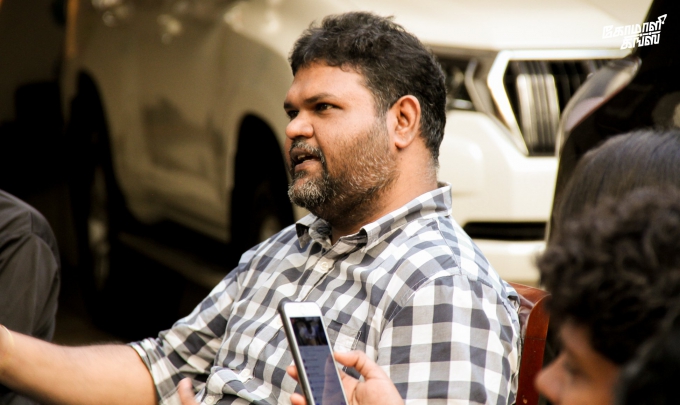
King Ratnam
What’s next?
I mean, it’s been a rollercoaster ride for me. It’s been personally very tough professionally. So now firstly, I think I need a break. I’m still not able to take a break and I need to take a break. I kind now the public has accepted this well, and they will probably expect something like this from me again. So I am waiting for that endorsement. I think I am getting that. There’s always something cooking in my head that I just need to focus on. Hopefully I will come out with a script soon.
Cover image courtesy: King Ratnam


